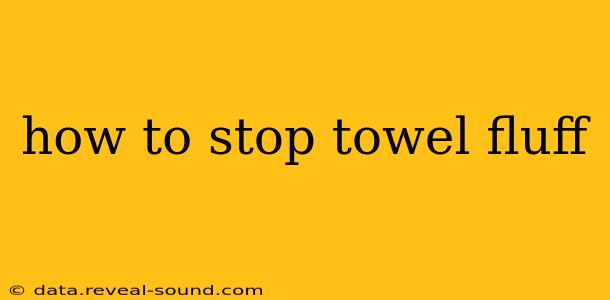Towel fluff—those annoying little bits of lint that cling to your clothes and skin—is a common problem. But fear not! This comprehensive guide will help you understand why towels fluff and offer effective solutions to keep your towels lint-free and your clothes clean.
Why Do Towels Fluff?
Towel fluff is primarily caused by the shedding of fibers from the towel itself. Several factors contribute to this shedding:
-
Towel Material: Towels made from lower-quality cotton or blends are more prone to fluff than those made from high-quality, long-staple cotton. The shorter fibers in cheaper towels are less tightly woven, making them more likely to break and shed.
-
Washing and Drying: Aggressive washing and drying cycles can damage towel fibers, leading to increased shedding. High heat, especially in the dryer, can weaken the fibers and cause them to break off more easily. Over-drying can also contribute to the problem.
-
Towel Age: Older towels tend to fluff more than new ones, as their fibers become weaker and more brittle over time.
-
Type of Fabric Softener: While fabric softener can make towels feel softer, some formulas can actually coat the fibers and reduce their absorbency, potentially leading to increased shedding.
How to Reduce Towel Fluff: Practical Solutions
Now that we understand the causes, let's delve into practical solutions to minimize towel fluff:
1. Choose High-Quality Towels
Investing in high-quality towels made from 100% long-staple cotton is the most effective long-term solution. These towels are more durable, less prone to shedding, and will last longer. Look for towels with a tight weave and a higher GSM (grams per square meter) for better quality.
2. Wash Towels Properly
- Wash in Cold Water: Cold water is gentler on towel fibers and helps to prevent damage.
- Use a Mild Detergent: Avoid harsh detergents that can strip the towels of their natural oils and weaken fibers. Opt for a gentler, fragrance-free option.
- Wash with Similar Colors: This prevents color bleeding and keeps the towels looking their best.
- Don't Overfill the Washer: Overcrowding prevents the towels from cleaning effectively and can increase wear and tear.
3. Dry Towels Carefully
- Air Dry When Possible: Air drying is the gentlest method and minimizes fiber damage. Hang towels to dry in a well-ventilated area.
- Dry on Low Heat: If you must use a dryer, choose a low heat setting and remove the towels promptly to prevent over-drying.
- Avoid Fabric Softener (or Use Sparingly): As mentioned earlier, fabric softener can sometimes worsen the problem. If you must use it, use a small amount.
4. Pre-Wash New Towels
New towels often shed more initially. Wash them separately in cold water before using them for the first time to remove loose fibers. Repeat this process if necessary.
5. Regularly Check and Maintain Towels
Inspect your towels regularly for any signs of damage. Replace any towels that are heavily worn or excessively shedding.
6. What about Lint Rollers and Lint Brushes?
While lint rollers and brushes are great for removing fluff from clothes after it's already shed, they don't address the root cause. They are a helpful post-wash solution, but tackling the source of the fluff is key to long-term effectiveness.
7. Is it Normal for New Towels to Shed?
Yes, it's perfectly normal for brand new towels to shed a bit of lint, especially during the first few washes. This is simply excess lint from manufacturing. The shedding should decrease significantly after a few washes.
8. How Can I Tell if My Towels are High Quality?
Look for towels made of 100% long-staple cotton, a high GSM (grams per square meter), and a tight weave. These factors indicate better quality and durability, resulting in less shedding.
By following these tips, you can significantly reduce towel fluff and enjoy softer, cleaner clothes and a more pleasant laundry experience. Remember, the key is prevention through careful selection and maintenance of your towels.
